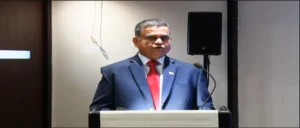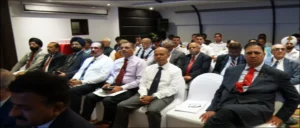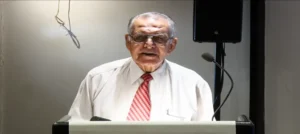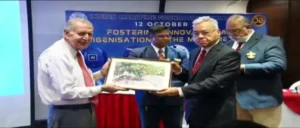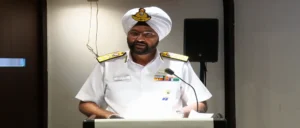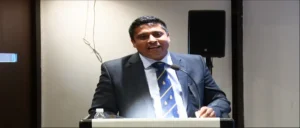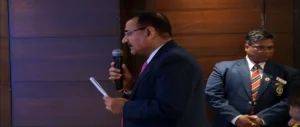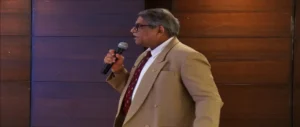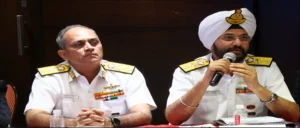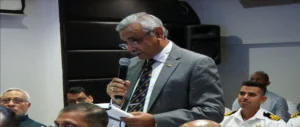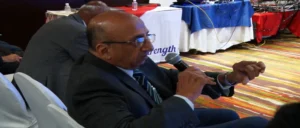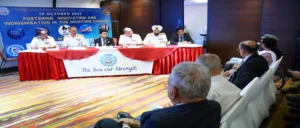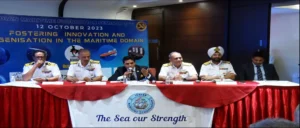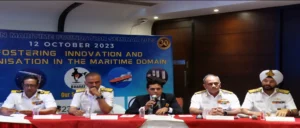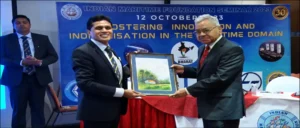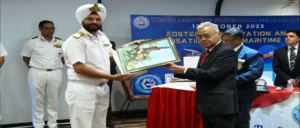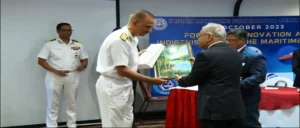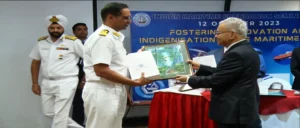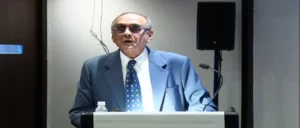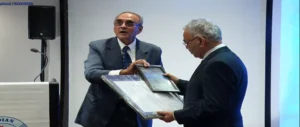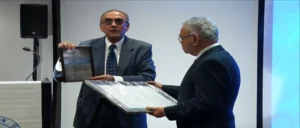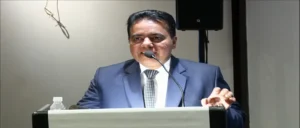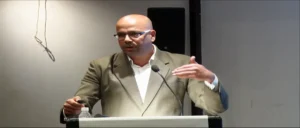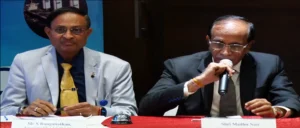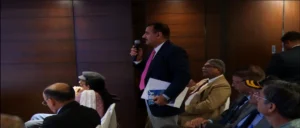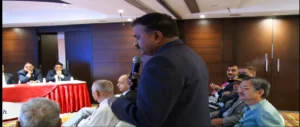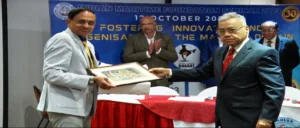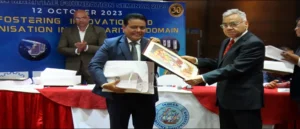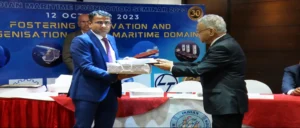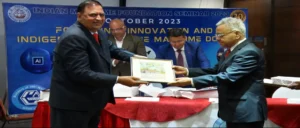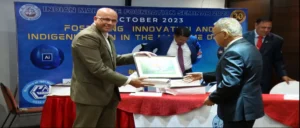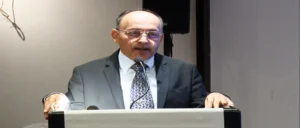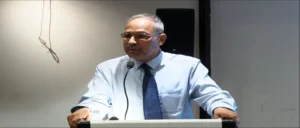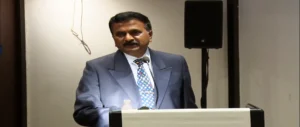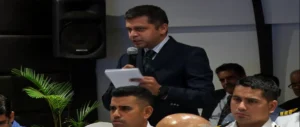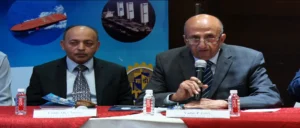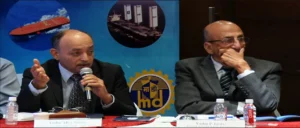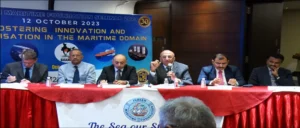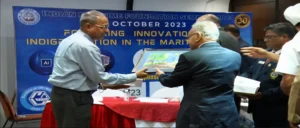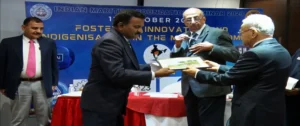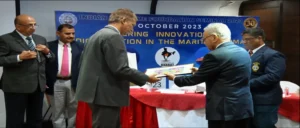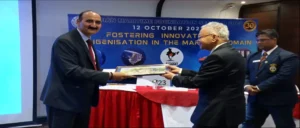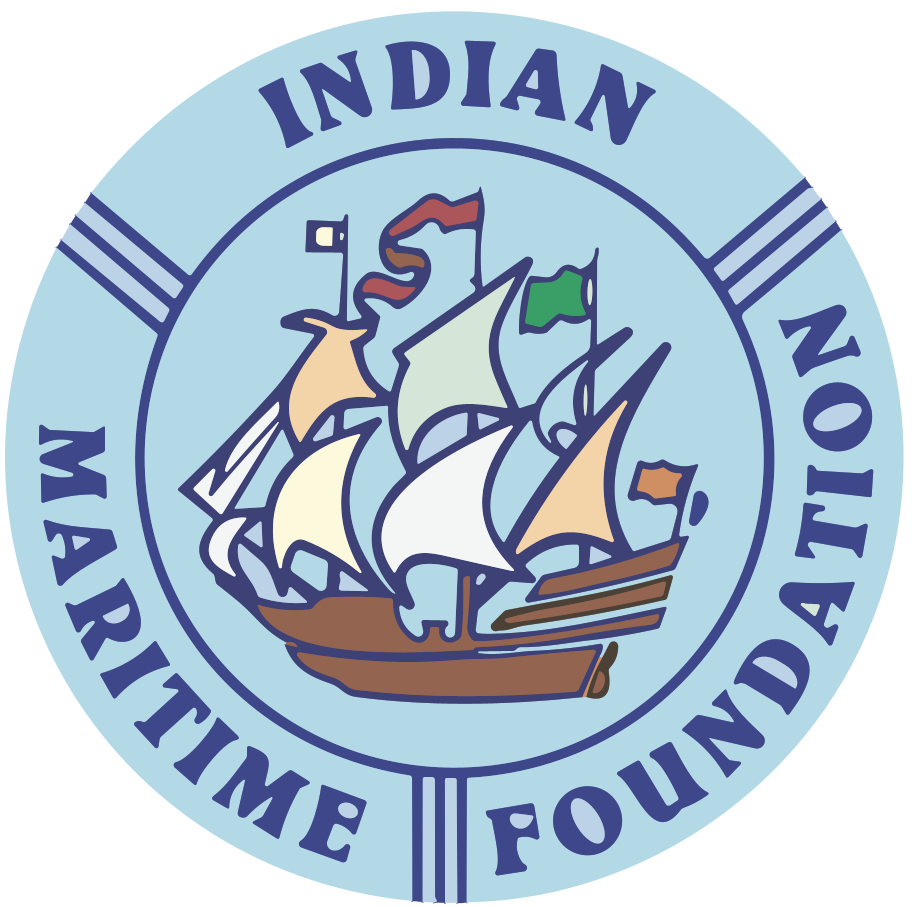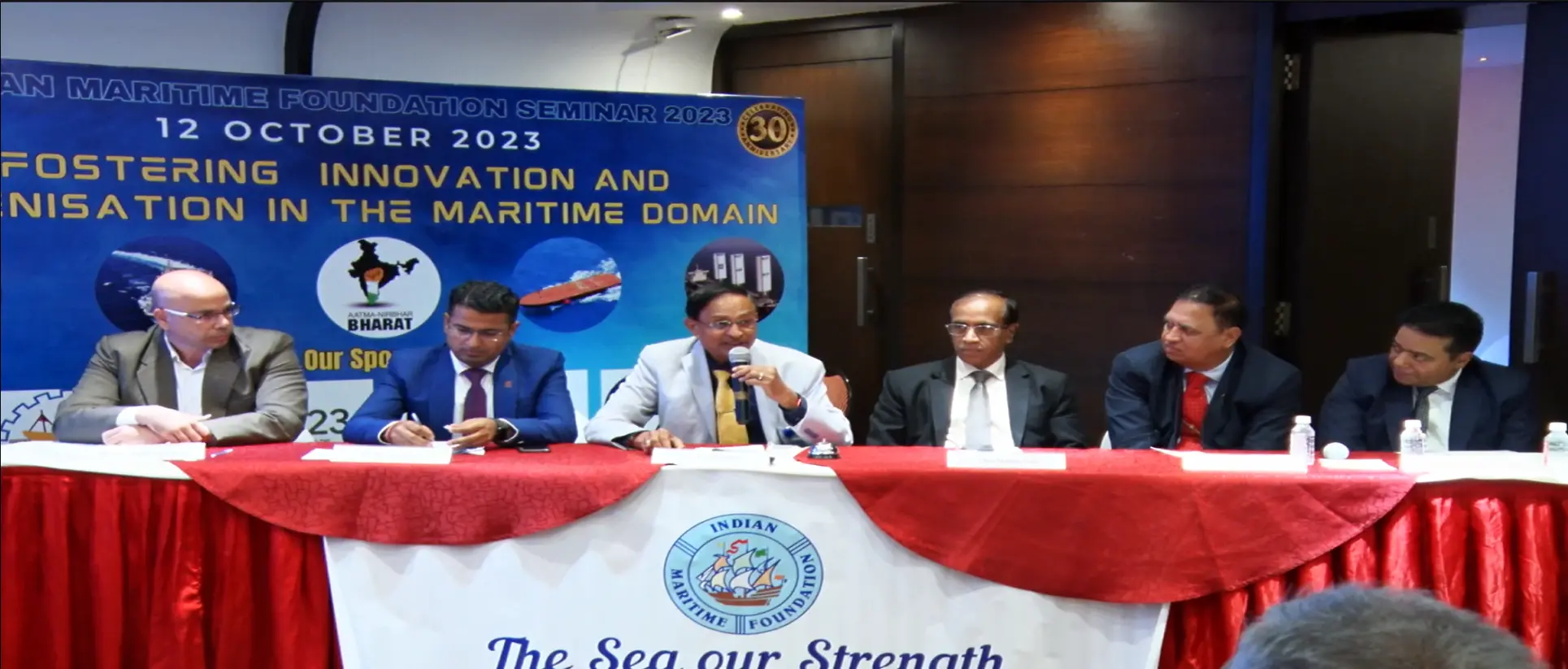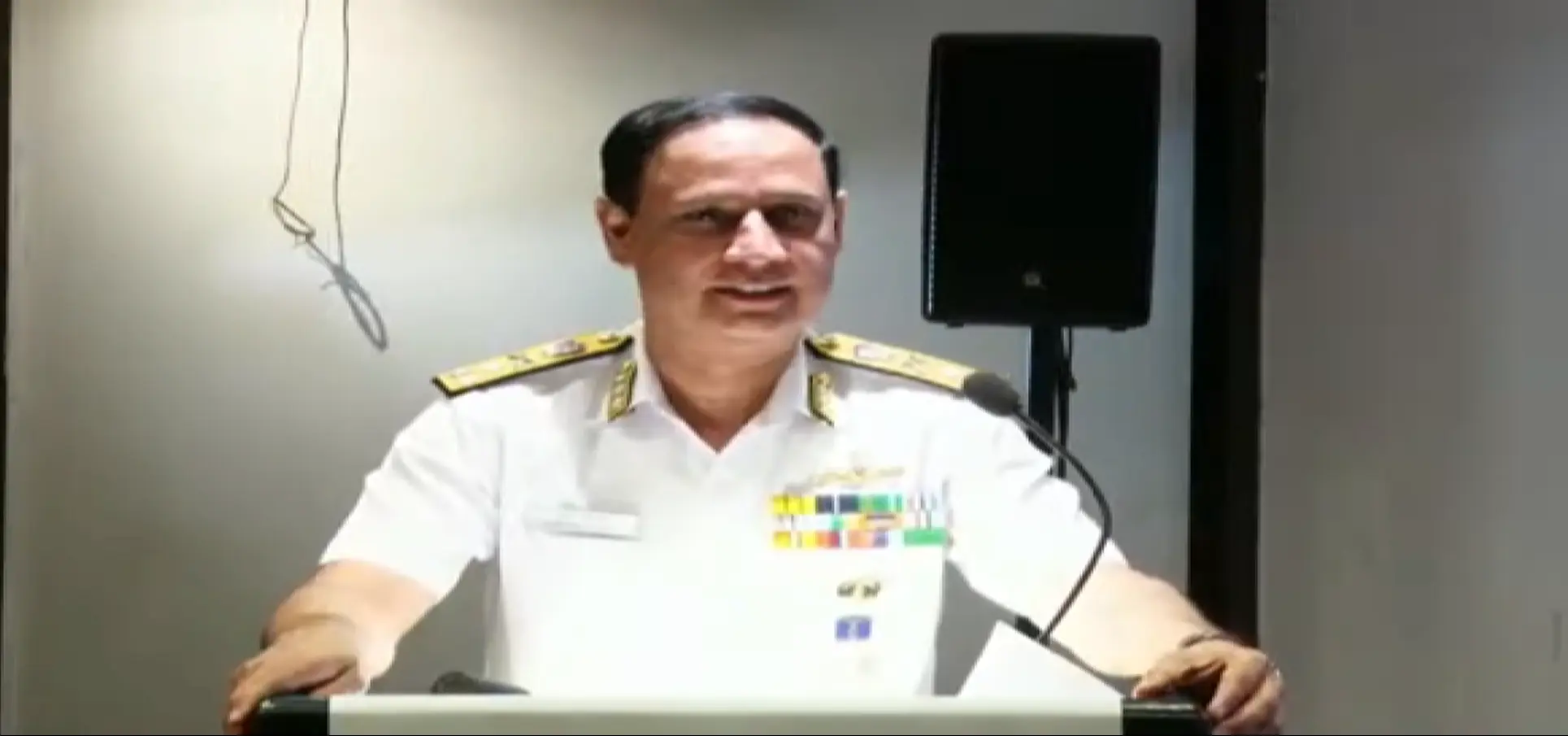
Annual IMF Seminar 2023
“Fostering Innovation and Indigenisation in the Maritime Domain”
The Annual IMF Seminar 2023 on the theme “Fostering Innovation and Indigenisation in the Maritime Domain” was held at the Central Park Hotel, Pune on 12 Oct 2023. Vice Admiral Ajay Kochhar, AVSM NM, Commandant National Defence Academy, was the Chief Guest on the occasion and delivered the Keynote Address. The Seminar commenced at about 9.30 a.m. with the singing of the National Anthem.
- Welcome Address
- Inaugural Address
- Keynote Address
- Session I: Innovation And Indigenisation Initiatives in Indian Navy (1100-1230 Hrs)
- Session II: Induction Of New Technologies (1330-1500 Hrs)
- Session III: Opportunities, Challenges and the Way Ahead (1515-1645 Hrs)
- Talk by Cmde Ajay Sharma (Retd), Bharat Forge Ltd
- Concluding Remarks
- Vote of Thanks
Welcome Address
Capt Anand Dixit, President IMF commenced by welcoming VAdm Ajay Kochhar, the three moderators: Vice Admiral Satish Ghormade (Retd), Mr S Ranganathan, Executive VP, L&T Defence and Vice Admiral Parvesh Jaitly (Retd) as well as all the other participants to the seminar. He also welcomed other senior retired – both defence and civil service – officers, representatives of shipyards and defence industries, officers of the Merchant Marine, academics and professionals to the seminar. He extended a special welcome to the representatives of the sponsors from CSL, MDL, IOCL, L&T SB, GRSE and Bharat Forge and thanked them for their support in conducting this seminar. He then gave a brief introduction of the Commandant NDA, before highlighting the significance of this year’s Seminar, which coincided with the 30th Anniversary of the IMF. (watch video)
Inaugural Address
The Inaugural Address was delivered by VAdm Vinod Pasricha PVSM AVSM NM, IN (Retd). He began an overview of the evolution of India’s maritime history and how our maritime strength had deteriorated with the arrival of colonial powers. He spoke about the importance of the Indian Ocean to the nation’s sovereignty and economic development. He then spoke about how our indigenous shipbuilding capability had grown to the point where we were now a ‘Builder’s Navy’ and not a ‘Buyer’s Navy.’ Some of the key capabilities that had been developed indigenously included designing ships with ‘stealth’ features such as low radar signatures, infra-red emissions, and self-noise levels. However, he felt that though the Navy’s indigenisation plans were well ahead of the other two services, co-ordinated work ethics between the Government, DRDO and our defence manufacturers need greater initiatives! He also highlighted some other areas of concern in our shipbuilding infrastructure and recommendations on how these could be addressed. He ended his talk by summarizing some of the challenges and opportunities that existed in our shipbuilding. (watch video)
Keynote Address
The Keynote Address was delivered by Vice Admiral Ajay Kochhar, AVSM NM, Commandant, National Defence Academy. He opened his talk with an overview of the importance of the “seas as a source of resources and as a means of transportation, information exchange and strategic dominion.” He quoted from a 2020 article in the Centre for International Maritime Security which talked of a 66-70-80-90-99 rule i.e. 66% of the global wealth comes from or near the sea, 70% of the globe is oceanic, 80% of its population is coastal, 90% of goods arrive by sea and 99% of international digital traffic goes by submarine cables. He too highlighted the importance of the maritime nature of our nation as integral to our national identity and firmly entrenched in our national ethos. He spoke about India’s maritime interests and how these were vital to our national security and economic development. He talked about new technologies that were coming into the maritime domain and said that the only way to achieve these capabilities and becoming an atmanirbhar Navy by 2047 was to “challenge the status quo, embrace technology in every facet, innovate and indigenise.” He also said that indigenous commercial shipbuilding should grow commensurate with warship building and many techniques and technologies were similar. He highlighted the importance of engaging with industry, academia, startup for system and equipment level technology development. He talked about recent initiatives such as the Navy’s SPRINT, the Govt’s iDEX and the promulgation of the Positive Indigenisation Lists. He wound up his talk by listing the challenges that lay ahead and suggested a ‘Way Ahead’ to address them. (watch video)
Session I: Innovation And Indigenisation Initiatives in Indian Navy (1100-1230 Hrs)
RAdm IB Uthaiah, AVSM VSM, Director General Warship Design Bureau opened the session by speaking on the topic ‘Fostering Indigenisation as an Enabler for Future Shipbuilding.’ He too gave a historical overview of the evolution of the Indian Navy’s indigenous design capability. He spoke about the significance of the shipbuilding industry and some of the key enablers that had contributed to growth and greater indigenisation in warship design and construction. He also highlighted some of the problem areas, before explaining what the Indian Navy was doing to overcome them.
Cmde Arun Golaya, Officer in Charge, Technology Development Acceleration Cell spoke on ‘Naval Innovation and Indigenisation Organisation – Innovating Towards Nation Building & ‘SPRINTing’ Towards Atmanirbhar Bharat.’ He started out by describing the structure of the Naval Innovation and Indigenisation Organisation (NIIO) which included the apex Naval Technology Acceleration Council and Technology Development Acceleration Cell. He then explained the concept of SPRINT (‘Supporting Polevaulting in R&D through iDEX, NIIO and TDAC’) and highlighted some of its achievements in a very short span of time. He also showed videos of some cutting-edge technologies developed by startups, which had been demonstrated at the Navy’s recent Swavlamban seminar organized by the NIIO.
Rear Admiral Iqbal Singh Grewal, Asst Chief of Materiel (MOD) spoke on “Leveraging Atmanirbhar Bharat – 2047: IN’s Mission Indigenisation.” He explained the Indian Navy’s structured vision for indigenisation and technology development and also gave an overview of the historical perspective of the Indian Navy’s journey towards indigenisation. He then covered recent GoI initiatives, which included schemes such as ‘Make (1, 2 and 3)’, ‘Technological Development Fund (TDF)’ and ‘Innovation for Defence Excellence IDEX.’ He delved into the IN’s long term vision and some enablers instrumental in realising atmanirbharta such as ‘Technological Perspective Capability Roadmap,’ ‘Integrated Unmanned Roadmap’ and the Swavlamban 2.0 document. Lastly, he outlined some challenges as well as collaborative opportunities in realising the vision of atmanirbharta.
RAdm Ankur Sharma, NM, DG WESEE talked on “Innovation & Indigenisation: The Naval Perspective.” He started out with a brief insight into the origins of WESEE, the organisation he headed, as well as the five functional domains in which they were working. He highlighted the importance of partnerships with industry and academia, illustrating them with examples of such partnerships. He then described the niche areas of technology that WESEE was focussing on such as autonomous systems, robotics, big data/AI, AR/VR/MR, space and technical communication, and applications based on quantum technologies. He also invited academia and industries, be it corporates, MSMEs or startups to partner with WESEE.
Capt Nikunj Parashar, CEO M/s Sagar Defence Engineering talked on “Autonomous Maritime System – Progress, Methods and Challenges.” He explained about the four degrees of autonomy for autonomous vessels as given by IMO. He said the most important part for inducting Maritime Autonomous Surface Ship was the standards of safe manning and standards of safe operation. Towards this end, he talked of a Risk Based Design Framework as well as the need for testing and validation, building the evidence for certification of operations, certification, and expansion of the operating envelope. He ended his presentation with a video of the Unmanned Surface Vessel developed by his company.
Q&A and Summing Up. Following the talks by the five panelists, there was a lively Q&A moderated by VAdm Satish Ghormade PVSM AVSM NM, IN (Retd). A number of questions were posed by the audience members to the panellists. In his Summing Up, the Moderator highlighted the importance of a solution-oriented approach for which there was a need to have a well-defined aim, create a defence ecosystem to encourage innovation and be product driven, not process driven. He stated that it is India’s moment today and the next 5 – 10 years were very important. He emphasised, “We need to mould elements of innovation, indigenization, self-reliance and bring academia, industry and all services together.” (watch video)
Session II: Induction Of New Technologies (1330-1500 Hrs)
Session II opened with a talk by Shri Madhu Nair, Chairman And Managing Director, Cochin Shipyard Ltd on “The Green And Tech Transition In Shipping- Opportunities For India – The CSL Experience”. At the outset, he covered the regulatory perspective of the transition towards Green Energy and Shipping. He spoke about global trends in alternative fuels as well as CSLs’ experience in this space. He also described some of the new vessels being built by CSL for European countries such as an Autonomous Zero Emission Ferry, Windfarm Service Vessels, Zero Emission Shortsea Container as well as many projects in the pipeline including hydrogen fuel cells, coastal vessels, and ammonia fuelled vessels. He then spoke about three types of ferries being developed by CSL: a Hybrid Electric Water Metro Ferry as part of the Cochin Water Metro Project, a Hydrogen Fuel Cell Ferry and a Fully Electric Catamaran Ferry. He highlighted efforts of other shipyards too such as Chowgules and Navalt in their green efforts as well as CSL’s own USHUS programme. He said that there were many opportunities for India to develop futuristic environment friendly vessels such as Green Methanol/Ammonia Powered Vessels and Green Tugs. Lastly, he talked about an Autonomous Surface Vessel Pilot Project that CSL was also working on.
Dr Sauhard Singh, Chief Research Manager, IOCL next spoke on “Strategies For The Reduction Of Emissions With New Technologies.” He explained the nuances of various environmental emission control regulations laid down by IMO on sulfur, NOx and SOx, before describing various abetment technologies to mitigate these such as Scrubbers, Very Low Sulfur Fuel Oil as well as use of alternative fuels like natural gas, LPG, propane, and methanol. He also covered methods to reduce NOx and SOx emissions from present day diesel fuel and various strategies available for combustion modification including the use of NOx reducers and 2-stage turbocharging. He ended his talk with a description of future marine fuels such as LNG and Methanol, along with their advantages and disadvantages and the need for future ships to have fuel flexibility.
Cdr (Dr) Shekhar Murthy. IN (Retd) next spoke on “Thinking Ships: Revolutionary Technologies to Propel The Future Of Maritime Sector.” He said that the future looked exciting with the prospect of Maritime Autonomous Surface Ship (MASS) which would come equipped with AI/ML, computer vision and geospatial sciences; and gave some examples of experimental MASS projects. He said that this digital transformation would incorporate processes such as Intelligent Asset Management and Marine Pilot Vision. He also talked about AI/ML Supply Chain Logistics and the application of Blockchain in the Maritime Industry. He also opined that there would be a psychological impact which would need to be addressed. He then gave a demo of a smartphone app developed by him through ChatGPT to quickly give answers on questions related to ship management.
Shri Biju George, Director Shipbuilding, Mazagon Docks Ltd spoke on “Indigenisation Efforts at MDL – On the Road to Technological Self-Reliance.” He opened his talk with the trajectory of growth of warship building by MDL, clarifying also that there was sometimes some discrepancy in numbers because of the way in which growth was calculated, especially with respect to the FE component. He spoke about the atmanirbhar initiatives taken by MDL as well as the items on the Positive Indigenisation List which MDL was trying to indigenise. He also spoke about certain indigenisation outreach initiatives as well as challenges being faced in indigenisation, ending his talk with a proposed Way Ahead.
Mr Koustubh Phalnikar, GM – Product Technology & Development Centre (Defence & Aerospace), L&T Defence spoke on “Mine Countermeasure Using USVs.” He firstly described the LT Vega USV platform being developed by L&T Defence for minesweeping, along with its specifications. He then described the software developed for operation of the USV for M CM planning. He brought out that the USV incorporated features for obstacle avoidance as well as a long range data link. He narrated the conduct of MCM trials conducted at INS Shivaji as well as the L&T shipyard at Kattupalli, before giving the Way Ahead.
Q&A and Summing Up. Following the presentations, the Q&A session commenced which was moderated by Mr S Ranganathan, Executive Vice President, L&T Defence. There were a number of questions put to the panellists by the audience members as well as comments. During his Summing Up, the Moderator highlighted the main points made by the panelists. He spoke about India being well positioned for the future with several advantages in its favour including the demography. He emphasized the need for collaboration, scalability and sustainability of the various initiatives that were being considered for implementation, towards national capability development. (watch video)
Session III: Opportunities, Challenges and the Way Ahead (1515-1645 Hrs)
VAdm AK Chawla PVSM AVSM NM VSM PhD, (Retd) spoke on the topic “Atmanirbharta Unbound.” He opened his talk by giving a brief overview of the indigenisation achievements in the maritime sector, specifically highlighting the impressive sea trials of Vikrant when he was embarked on board. He then delved into the major problem areas facing indigenisation, covering them under the heads ‘Planning and Acquisition Related,’ ‘Budget/GFR Related’ and the one he considered to be the most significant – the ‘Single Vendor Conundrum.’ He compared the process in India with some other advanced countries and felt that some practices followed by the latter were worth considering. He also bemoaned the lack of a defence exports organization, like some other nations had.
Cmde (Dr) RK Rana (Retd) then spoke on “Are We Doing Enough for Transitioning to Net Zero Carbon in Maritime Domain?” He opened his talk by highlighting that IMO had revised its 2018 GHG emissions target in July 2023 to achieve net zero by 2050. He said that the entire shipping ecosystem needed to be looked at to mitigate this, which would involve a host of stakeholders. However, he said his talk would be limited to measures for ships at sea, primarily through the use of alternative fuels. He thereafter looked at each alternative fuel such as nuclear, wind, hydrogen, methanol, ammonia, etc. in turn, analyzing its pros and cons. He also described the measures being taken in India as well as the Indian Navy for reducing emission, before giving his recommendations to achieve net zero targets.
Capt S Krishnamurthi, CEO Trimsail next spoke on “Ship Voyage – Cost Vs Carbon…Can We Reduce Both?” He said that – unlike in the Navy – mercantile marine shipbuilding and shipping were completely profit driven. Consequently, for shipowners the biggest priority was how to save costs in terms of both fuel expended as well as emissions. He showed the dashboard of a software developed by his company to record and analyse data generated by a ship in various environmental conditions, hull-wave interactions, underwater geometry, etc. He explained how even a relatively small saving per mile could become a cumulatively high value if extended to several ships and total distance of voyages. Consequently, it was now possible to run simulations to predict the most efficient operating regimes to save costs.
RAdm (Dr) PJ Rangachari, IN (Retd) next spoke on the subject “Applications of Analytical Techniques, Causal Modelling and AI in the Maritime Domain.” He said that he was interested in understanding system dynamics, whatever the system might be. He was also interested in attempting diagnostics of faults, specifically in a marine power plant. He said there needed to be a Unified Analytical Framework, since a shipboard system was extremely complex with interplays between various sub systems, equipment and indeed the entire ship. He thereafter explained the proposed model for fault diagnostics, which made use of a number of mathematical equations, but which tell whether a fault was due to fair wear and tear or any other causal association.
RAdm R Sreenivas VSM, IN (Retd) was the last speaker in the session who talked on “Challenges and Ecosystem Imperatives for Comprehensive Self-Reliance In Defence – A Remedial Approach.” He began by expounding on his own interpretation of atmanirbharta. He then went on to describe the causes for the shortfalls in India’s indigenous ecosystem and also proposed strategies on how these needed to be addressed by creating/acquiring IPs. He also spoke about the need for a Self-Reliance Ecosystem and described what its’ constituents should be vis-à-vis what they actually were. He then talked at length on the existing Product Conceptualisation and Systems Engineering (PC&SE) Ecosystem and how it needed to be revised so as to align with similar ecosystems prevalent in other advanced nations.
Q&A and Summing Up. Session III was followed by a short Q&A Session, moderated by VAdm Parvesh Jaitly, PVSM AVSM VSM, IN (Retd). The Moderator in his Summing Up highlighted – in his opinion – some of the shortfalls in the indigenization story. For example, the lag in the ‘move’ and ‘fight’ categories. He also said that here was a lack of synergy between the DRDO Technology Road Map and the Naval Technology Road Map. He also felt that teamwork between academia, R&D, industry, and the customer were more in name than in spirit. He also felt that shipbuilding infrastructure augmentation was an area of concern. Lastly, he felt that there needed to be a research organization for ship design. (watch video)
Talk by Cmde Ajay Sharma (Retd), Bharat Forge Ltd
Following Session III, there was a special talk by Cmde Ajay Sharma (Retd), Bharat Forge on “Futuristic Technologies and Roadmap for Indigenous Unmanned Systems (Land, Air & Naval Applications) – BFL Perspective.” He opened his talk by narrating the exponential growth of technology, especially in the field of computing and sensors. He then highlighted the role of technology in Battlefield Management and also described certain structural reforms initiated by the GoI towards indigenisation. He then talked about some building blocks of the private industry as part of the indigenous defence roadmap. He then gave an overview of various products being developed at Bharat Forge, with special focus on unmanned systems. (watch video)
Concluding Remarks
VAdm Anil Chawla (Retd) delivered the Concluding Remarks, in which he emphasised a few key takeaways. He said that while India had made a name for itself in terms of economic growth, the maritime sector needed to contribute much more than it presently did. He dwelt on the growth of the Chinese PLA Navy and the threat it posed to India’s security. He said that there needed to be a restructuring of India’s defence ecosystem to meet this challenge. He ended by saying that conflicts had occurred when there was an imbalance in power and, consequently, India needed to ensure that the balance of power did not shift to such an extent to China’s side that it would feel emboldened to know that India would be deterred. (watch video)
Vote of Thanks
The Seminar ended with a Vote of Thanks by Cmde Ajay Chitnis, SC NM (G), Vice President IMF. All the speakers, moderators and sponsors were also presented mementos by President IMF.
We also take this opportunity to thank our sponsors, M/s IOCL, L&T, CSL, GRSE, MDL, and Bharat Forge for their generous contributions towards helping us conduct this seminar. Some photos of the event may be viewed below.
